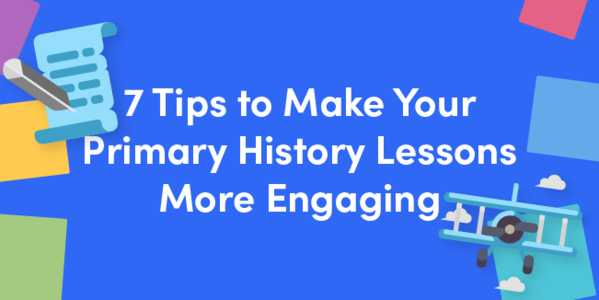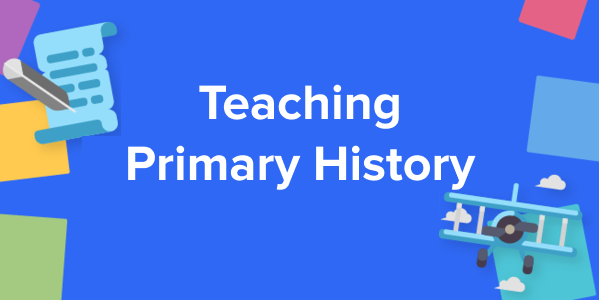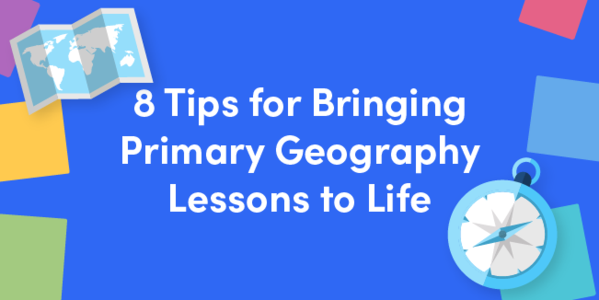7 Tips to Make Your Primary History Lessons More Engaging

History, like any story, is only boring when it is badly told. This certainly extends into the classroom in school history lessons, where history can be brought to life for students, inciting a life-long passion, or appear completely irrelevant to their current lives.
History gives us an essential perspective on the world around us, helping us to identify patterns and move toward a better future. While adults can see the relevance of learning about history, it’s a much bigger challenge for teachers to make history, recent or ancient, feel relevant to primary school pupils.
So, how can we better bring KS1 and KS2 history lessons to life for young learners?
7 Tips to Make Your Primary History Lessons More Engaging
1. Don’t shy away from difficult topics
It’s easy for us to look out at a sea of innocent young faces and wish to protect them from knowing about the terrible things that took place in the past, and still take place in the world today. But think of all the things that grip us–and our pupils–in the stories we love; the rise of champions, the fall of evil, adventure, forming bonds, and learning about a world or life different from our own.
By offering young children the opportunity to learn about the more gruesome details of history, you allow them to engage and connect with what you’re teaching them. Whether it be a battle, how difficult it was to survive in an era without modern medicine, or the mistreatment of others, telling children stories about what people endured allows them to think critically about how those circumstances influenced the world around them today.
For example (for older pupils), teaching about Windrush and how people arriving in the UK (many of which may be the grandparents of your pupils) were received will allow you to open sensitive discussions about racism. For younger pupils, you can teach pupils about the laborious jobs children in the Victorian era worked, linking this to the Industrial Revolution and how that shaped our lives today.
2. Focus on individuals
Since history is essentially storytelling, try to use a protagonist where possible for your pupils to identify with so they can more deeply connect with the past. For example, if you’re teaching them about Victorian England, find or create a character who is their age and use them to explore what life was like in those times. If the character is a child, consider what toys they played with, what time they’d wake up in the morning, what they ate and what job they did.
Once your pupils have learned and engaged with a character from history, you can get them to write a diary entry from their perspective, draw pictures of what they think their life was like, or even act out scenes from history. Through doing this, you’re bringing to life key historical knowledge, both helping students to engage with the curriculum material and improving their understanding of history’s impact.
3. Get out of the classroom
History is everywhere; while museums will always be a great place to take children on a school trip, we’re fortunate here in the UK to live in places that are surrounded by thousands of years of history. It’s likely that there is a building over 400 years old a stone’s throw away from your school, a battlefield a short drive away, and a Roman road or villa just a little further afield.
Do your pupils travel on the A5 on the way to school? Bring your lessons on Roman Roads to life by teaching them about the road’s Roman History. Are you fortunate enough to live near Stone Henge – make your Stone Age lessons engaging with a local trip!
We are surrounded by opportunities to see history in our real world, so consider getting children outside to see it. If that’s not possible, pictures and videos of local landmarks can be a great substitute that gets children talking about history when they’re out and about with their families. Focus Education provides a great Primary History scheme of work that provides clear guidance for teachers whilst leaving room for schools to create a bespoke curriculum that’s reactive to the school’s local area and its history. Whether that be through picking landmarks relevant to your area or studying biographies of famous historical people that are local, schools and teachers can feel confident they’re covering the national curriculum whilst bringing history to life for their students!
4. Watch a movie
Watching videos and movies aren’t just close-to-Christmas activities or for substitute teachers, they’re a great way to bring history to life on screen. Not only do children love an opportunity to sit back and relax, but you can talk to your pupils about historical accuracies and inaccuracies in the movie and what reality was like for people living in the time the movie is set.
5. Make personal connections
Our families are full of history and events endured - even just the past few years have given us all a list of historically significant events we can add to the list of things to tell our grandchildren about. However, it’s often not until a child reaches adulthood that they start to think deeply about their family history, by which point some members may no longer be around to tell their story.
Asking pupils to reach out to their grandparents (or great-grandparents if they’re still around) can help pupils make the link between history and their lives today. It can also give them insight into how large-scale events or inventions changed the lives of their family members and help them connect with older family members while they can.
5. Use props or antiques
Bringing real objects into the classroom for your pupils to touch and look at is another great way to bring history to life in the classroom. Whether it be a historical costume or a few trinkets and items you found in a local charity shop, these small items can transport pupils to another time and place.
6. Make history local
We touched on this concept earlier while talking about getting out of the classroom but making links from history to local events and landmarks will help children imagine what it was like to be alive in another time.
You can also use this information to show how things change over time or how historical events have impacted the world we live in today. For example, if you’re teaching in a London school, teaching children how the Great Fire shaped the city around them will give history real-world impact and significance. This Great Fire of London lesson considers how the fire shaped how London’s built today.
Make History Lesson Planning Easier
Once you start finding ways to bring history to life in the classroom, history lessons become something you and your pupils look forward to. Children learn easily as they engage with the stories of the historical world around them. Of course, fun and engaging history lessons take time to plan, time teachers are often very short of which is where History schemes come in.
We’ve partnered with Focus Education to bring you a history scheme of work that gives you the freedom to focus on what’s going to bring the national curriculum to life for your pupils. Focus Education schemes encourage links to the local area and focus on showing the real-world impact of the historical events and periods you’re teaching about.
You can find Focus Education’s history scheme, along with their geography and science scheme and thousands of other resources, in the Pango library. Sign-up today to start your free trial and bring your History lessons to life!


